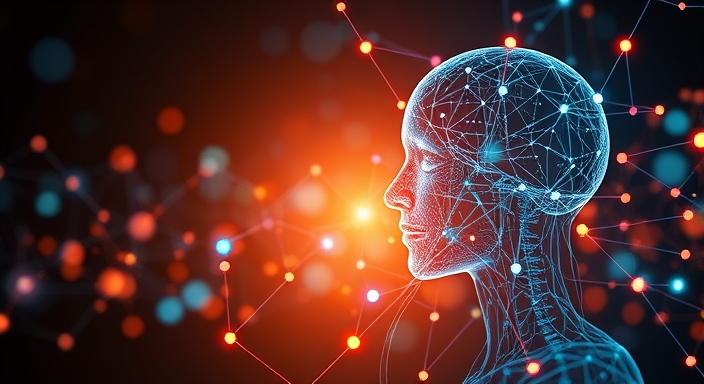What Is Artificial Intelligence? A Beginner’s Guide
Artificial Intelligence, often abbreviated as AI, refers to the development of machines that can perform tasks requiring human intelligence. From recognizing speech to solving complex problems, AI is transforming the way we live and work. Unlike traditional programming, AI systems can learn and adapt over time, mimicking cognitive functions such as reasoning and problem-solving.
For example, tools like ChatGPT have redefined the way we interact with text-based systems, making information more accessible and dynamic.
If you’re a beginner, imagine AI as the brains behind everything from AI-powered chatbots in customer support to AI tools for productivity like scheduling assistants that help you streamline your day-to-day tasks.
The History and Evolution of Artificial Intelligence
The roots of AI trace back to the 1950s, when pioneers like Alan Turing asked, “Can machines think?” Over the decades, we’ve seen significant advancements:
- 1956: AI was officially coined at the Dartmouth Conference.
- 1980s: Introduction of machine learning algorithms fueled by advancements in computing power.
- 2000s and Beyond: The rise of deep learning and Generative AI revolutionized fields like natural language processing, image recognition, and more.
Today, industries like finance, healthcare, and education benefit from AI innovations, while AI in marketing is reshaping how businesses target their audiences.
How Does Artificial Intelligence Work?
AI operates on data, algorithms, and computing power. It works by:
- Data Collection: Massive datasets are used to train AI systems.
- Machine Learning: AI learns patterns from data using algorithms.
- Deep Learning: Complex neural networks mimic the human brain, enabling tasks like image and speech recognition.
For example, AI coding assistants are trained on millions of lines of code to suggest improvements or even write code snippets.
Applications of AI in Everyday Life
AI is no longer limited to research labs—it’s part of our daily lives. Some prominent applications include:
- AI in Healthcare: From early disease detection to robotic surgeries, AI is revolutionizing patient care.
- AI search engines: Tools like Google use AI to deliver precise search results.
- AI in finance: AI-powered tools analyze stock trends and detect fraudulent activities.
- AI text generators: Writing assistants like ChatGPT craft emails, blogs, and even stories!
- AI for small businesses: From automating marketing to managing inventory, AI levels the playing field for entrepreneurs.
Artificial Intelligence vs Machine Learning: What’s the Difference?
Though the terms are often used interchangeably, AI and machine learning (ML) are distinct:
- Artificial Intelligence is the overarching concept of machines simulating human intelligence.
- Machine Learning Algorithms focus on training models to improve performance without explicit programming.
For instance, AI automation tools rely on machine learning to improve efficiency over time.
The Pros and Cons of Artificial Intelligence
AI has its advantages and challenges.
Pros:
- Increased productivity with tools like AI automation tools.
- Enhanced creativity through AI-generated music and AI text-to-video tools.
- Improved decision-making in fields like finance and healthcare.
Cons:
- Ethical concerns like bias in AI ethics.
- Job displacement, sparking debates on AI job impacts.
- Privacy issues with AI and privacy concerns becoming a growing challenge.
How AI Is Transforming the Job Market
AI is reshaping the workforce. Roles requiring repetitive tasks are increasingly automated, while new opportunities emerge in AI-related fields.
- Jobs in AI courses and certifications are skyrocketing.
- Tools like AI in education help teachers personalize lessons for students.
However, industries must prepare for the shift, addressing AI job impacts and retraining employees.
AI Ethics: Challenges and Controversies
AI is a powerful tool, but it’s not without controversy. Ethical challenges include:
- Ensuring fairness and transparency in decision-making.
- Addressing AI and privacy concerns regarding data misuse.
- Building trust in tools like AI in cybersecurity, where stakes are high.
Navigating these challenges will require collaboration among policymakers, technologists, and businesses like Cricut Designs.
The Role of Artificial Intelligence in Business
Businesses leverage AI to optimize operations and stay competitive:
- AI in marketing: Personalizing ad campaigns for better ROI.
- AI for SEO: Optimizing websites to rank higher on search engines.
- AI in finance: Automating risk analysis and fraud detection.
Even AI for small businesses can help startups compete with larger enterprises by streamlining processes and reducing costs.
The Future of Artificial Intelligence: Trends to Watch
The future of AI is brimming with possibilities:
- Future AI trends like explainable AI will make algorithms more transparent.
- Growth in AI-powered chatbots will improve customer experiences.
- Advances in Generative AI will fuel innovations in creative industries.
- Integration of AI into industries like education, healthcare, and cybersecurity will continue to expand.
To stay ahead, explore AI courses and certifications, which can provide insights into these trends.
Conclusion
Artificial Intelligence is shaping the world in unprecedented ways, from enhancing productivity with AI tools for productivity to safeguarding data with AI in cybersecurity. As we look to the future, the possibilities seem endless.
For small businesses, tech enthusiasts, or anyone curious about the world of AI, this is the perfect time to explore its potential and join the revolution.

